New examples of a rare coin type of Gerasa in the Decapolis
Abstract: We present three additional examples of an extremely rare coin type of Gerasa struck at the time of Elagabalus and depicting a statue of Artemis inside a distyle temple, bringing total number of known examples to six. The type is quite significant, being the only architectural type minted in Gerasa. The newly published examples allow to fully read the reverse inscription with the ethnic of the city in genitive plural form. One of the coins is bearing a bow shaped countermark known from two other coin types of Gerasa from the time of Elagabalus.
Key Words: Numismatics, Roman Provincial coins, Decapolis, coin iconography
Zusammenfassung: In diesem Beitrag werden drei neue Exemplare eines seltenen Münztyps aus Gerasa vorgestellt; er wurde unter Elagabal ausgegeben und zeigt auf der Rückseite Artemis in einem zweisäuligen Tempel. Die Anzahl der überlieferten Stücke erhöht sich damit auf sechs. Es handelt sich um den bislang einzigen bekannten Architekturtyp aus Gerasa. Die Zuweisung zu Gerasa wird durch die nun klar lesbare Legende mit dem Ethnikon im Genitiv Plural bestätigt. Für diese Verortung spricht auch die Verwendung eines Gegenstempels mit Bogen.
Schlagwörter: Numismatik, griechische Städteprägungen, Dekapolis, Münzikonographie
In 2003 Achim
Lichtenberger has published two examples of an apparently new
type of coin issued in Gerasa at the time of the rule of
Elagabalus from the Numismatic Museum of the Jordan National
Bank[1].
The coins closely resemble contemporary issue of Bostra[2].
In fact, the similarity is so significant that Arie Kindler has
mistakenly included an example of this type (from Kadman
Numismatic Pavilion, Tel Aviv) in his corpus of coins of Bostra
as degraded version of type 32, see Plate III 32b.
Unfortunately, quality of printing of the illustrated coin does
not allow further analysis of this example. Lichtenberger
pointed at few key characteristics of this issue allowing
attribution to Gerasa. The inscription on one of the published
coins is quite clear, and while partial, includes the entire
name of the city. An additional significant feature is the
posture of the depicted deity. Typically, images of deities in
temple on Roman provincial coins were made after particular
statues of these deities, thus different posture suggest
different temple, hence different types of coins. Zeus Ammon on
the Bostra coin is shown with hand down, while the Gerasa coin
has a figure with hand up, in position typical for Artemis
depicted on multiple coins of Gerasa issued since the time of
Hadrian, and the cult of this goddess is central for the city[3].
No other coins of this
type have been published in the literature or sales catalogues
since 2003. Here we present three additional coins of this type
(figs. 1–3), bringing the total number of known examples
to six and reinforcing attribution of the type to Gerasa. One of
the coins, the best-preserved example of the type so far, allows
to read the whole inscription as ΓΕΡΑCΗΝΩΝ (fig. 1), and
a clear depiction of the deity in the temple, leaving no doubt
that it is indeed Artemis with horned animal on her left and
arrow (with quiver?) on the right. Another coin (fig. 3)
bears a countermark in the shape of a bow. Such countermarks are
known from two types of coins struck under Elagabalus in Gerasa[4].
It is not surprising since the bow is an attribute of Artemis.
No other city in the region countermarked its coins with bow
beside Gerasa. Basing on this evidence one can conclude that the
type is indeed an issue of Gerasa by Elagabalus, likely the only
one depicting the temple of Artemis. Two other Elagabalus types
from Gerasa have typical weights of about 8 and about 6 g[5]
In general,
architectural types are very common in coinage of the Decapolis[6],
however it is not the case for Gerasa. In fact, this coin is so
far the only architectural type known to be produced in Gerasa[7],
making it quite significant and allowing to connect numismatic
and archaeologic evidence.
Coins:
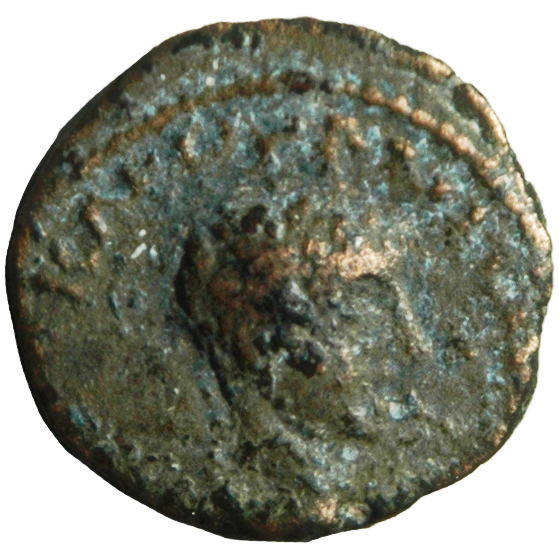
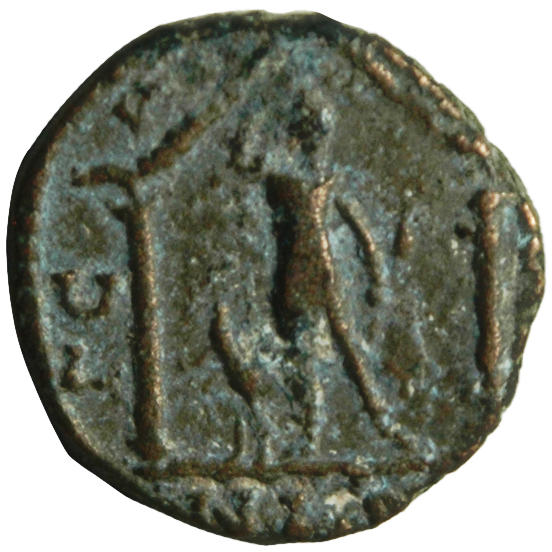
No. 1. 17mm, 4.20 g, 5h
Obv: KAICAP ANTΩ.
Laureate bust of Elagabalus right.
Rev: ΓΕ-Ρ[ ]//ΝΩΝ.
Distyle temple with statue of Artemis, holding bow in one hand
and probably an arrow in another. Horned animal at the right
foot.
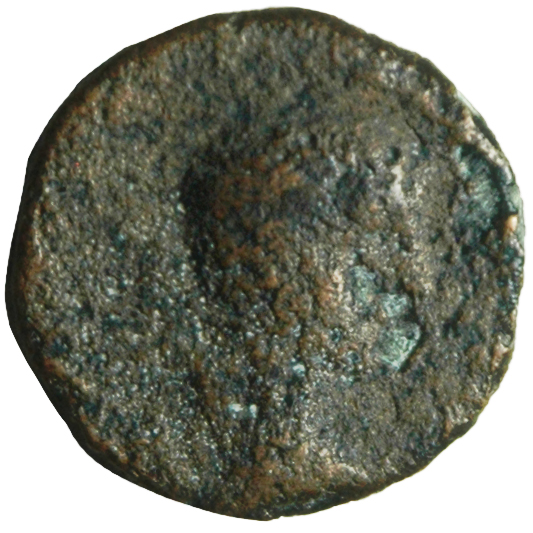
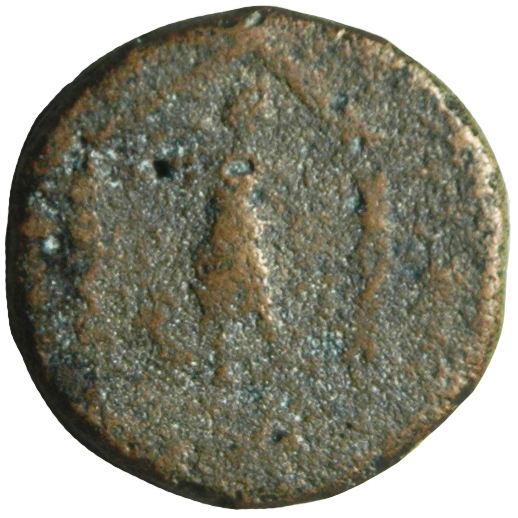
No. 2. 16mm, 3.13 g, 12h
Obv: Same as coin 1.
Rev: [ ]. Same as coin
1.
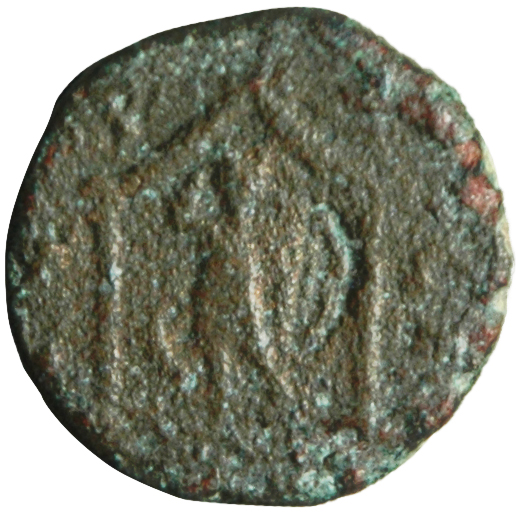
No. 3. 16 mm, 3.51 g, 6h
Obv: Same as coin 1.
Rev: [ ]PACH[ ]. Same as
coin 1, to the right of Artemis countermark in the shape of bow.
[1]
Lichtenberger 2003, 197 no. 5; 453 nos. 108–109.
[2]
Kindler 1983, type 32a.
[3]
Lichtenberger 2003, 195–197. 200–208 and Lichtenberger
2008.
[4]
Spijkerman 1978, types 33, 34; Howgego 1985, type 376
for the countermark.
[5]
Spijkerman 1987, 164–167 types 32–33 (Tyche) and types
34–35 (Alexander bust).
[6]
Bowsher 1987.
[7]
Lichtenberger 2003, 197.